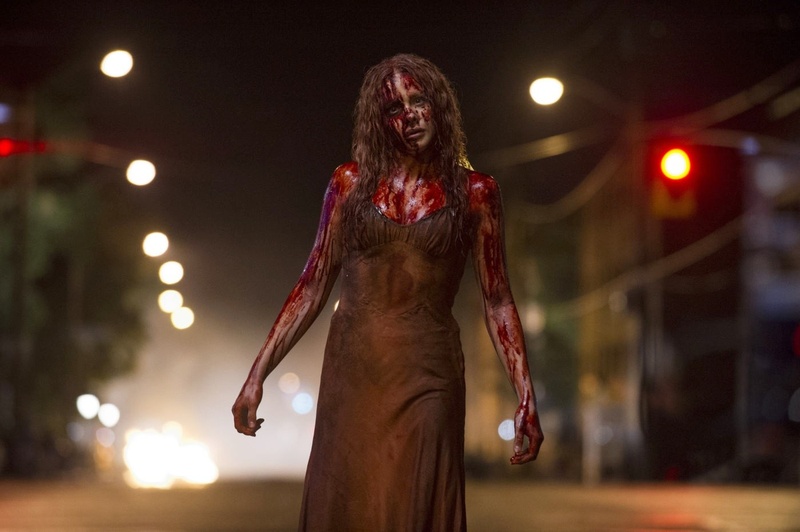What makes a good horror movie? One might say that a good horror movie is one that emphasizes the presentation of the grotesque. This answer could be called the grindhouse approach, and it has produced many well-regarded horror franchises—“Saw” and “Friday the 13th” come to mind. The 1976 Brian De Palma adaptation of a Stephen King novel “Carrie” falls firmly into this category. “Carrie” was not a particularly well-made film—the cinematography is poor to middling and the screenplay is unconvincing—but nevertheless is considered a classic of the horror genre. Sissy Spacek leads as the eponymous persecuted, telekinesis-endowed teenager, now a cultural icon in her blood-soaked prom dress.
However, there is an alternate approach to making horror films, one that, while often still using much violence and grotesquery, relies primarily on intellectual horror. Such films, notably “The Silence of the Lambs,” tend to be much more coherent thematically and formally, and thus they tend to resonate much more deeply than simple gore-fests. Kimberly Peirce’s remake of “Carrie,” starring Chloë Grace Moretz, aspires to be this sort of horror film, and although imperfect, it meets with much success.
The tenor of the new “Carrie,” and its differences from the old, are captured in the first sequence. De Palma has a brief gym volleyball game followed by a five-minute slow-motion girls’ locker room scene, which is nothing but an incredibly uncomfortable piece of 1970s erotica. Peirce instead has a tightly framed, deliberate scene in which Margaret White (Julianne Moore) gives birth to the Carrie. Margaret, crouched murderously above her child with a pair of scissors, provides a striking tableau that calls to mind Francisco Goya’s late paintings of parental malevolence. Pierce’s introduction immediately and intentionally emphasizes the horror and perversity of the story, while also providing the deeply resonant and memorable motif of child sacrifice to which the film can return. On the other hand, while De Palma’s sequence is also disturbing, it is unclear if this is intentional or just the byproduct of the objective tastelessness of somebody wandering around filming nude scenes in high school girls’ locker rooms.
This increased thoughtfulness in writing is also evident in the treatment of Carrie as a character. De Palma’s Carrie is a monster. While she may inspire pity and horror in the viewer, she does not inspire empathy—she has a vapid personality, reacting without subtlety to external stimuli. Peirce and screenwriters Roberto Aguirre-Sacasa and Lawrence D. Cohen, on the other hand, presents a Carrie with much more pluck, standing up to her mother not out of blind reaction but out of well-formed, intelligent opposition. In the scene in which Margaret attributes her daughter’s first period to libidinous thoughts, the new Carrie protests “That’s not even in the Bible!” while the old Carrie just voices inarticulate rejection. The new Carrie is one with whom we can sympathize, a fact that makes her murderous rampage in the film’s climax all the more terrible to see, and all the more enjoyable and cathartic. She is not so much an angered monster as an avenging fury.
At the same time, in this program of revision, Peirce modernizes some aspects of the story. Carrie’s humiliation at the hands of the other girls in her gym class is filmed on an iPhone and posted to YouTube. Carrie searches through her school library on a digital catalogue. The uncomfortable prom rituals of the 1970s are replaced by the uncomfortable prom rituals of the 2010s. Nevertheless, the remake generally stays true to the story of the original, even retaining much of the original dialogue.
In spite of Pierce’s generally more artful treatment, there are flaws in the new “Carrie.” In the final scenes, the dialogue becomes increasingly heavy-handed and melodramatic, with such trite, hackneyed lines as “I have been hurt my whole life.” Special effects, especially for Carrie’s telekinetic actions, are somewhat overused and a touch too slick. “CSI”-style slow-motion sequences depicting the deaths of characters are dissonant with the film’s overall aesthetic. Nevertheless, these faults are relatively minor compared to the work’s general elegance.
Ultimately, however, one must return to the question above: what makes a good horror film? The new “Carrie” does not necessarily inspire the same visceral disgust that the old “Carrie” does, and indeed, one might argue that it tends more towards tragic fantasy than true horror. Peirce, however, has made a much more intelligent and ambitious film, and thus may be said to have bettered De Palma in some way. It is the individual’s standard of horror that will determine the relative success of each. That said, it may be taken as an encouraging occurrence that, in the era of Michael Bay, one major film has opted for a subtle approach, even in that most unsubtle of genres, horror.
Read more in Arts
'The Bacchae' Botches DionysusRecommended Articles
-
Over the WireBARCELONA--A Loyalist air squadron tonight raided Generalissimo France's aviation base at Palma de Majorca in the Balearic Islands, setting fire
-
Students Have No Right to AidIt seems like every time I open your paper there is a hysterical opinion column about proposed cuts in student
-
BULLITT WINS 135 LB. CROWN AS BRODY TAKES UNLIMITEDSetting the pace in the University Boxing Championships held last night in the Indoor Athletic Building J. M. Bullitt, promising
-
Harvard Takes on Yale in Storefront Chess MatchFor more than two centuries, the loyal legions of Yale and Harvard have struggled for athletic and social pre-eminence, with
-
MIDYEAR EXAMINATIONSThe hours and meeting places of all Midyear Examinations scheduled for tomorrow will be found posted in Leavitt and Peirce














